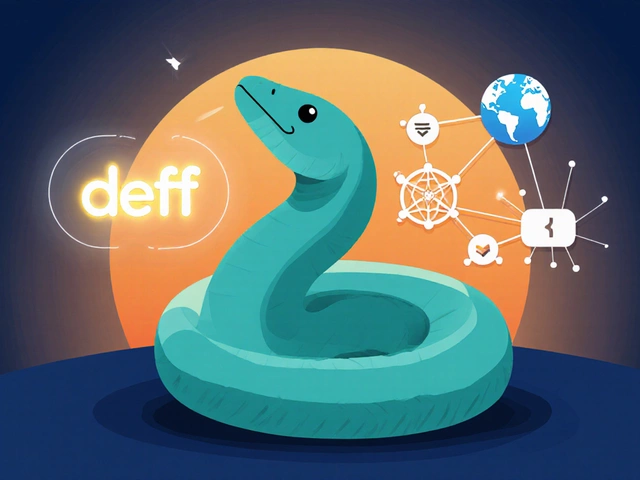Jul
3

- by Dhruv Ainsley
- 0 Comments
Picture this: You’re sitting at home in your pyjamas with a steaming cup of coffee and a curious cat named Luna curled up at your feet. Meanwhile, somewhere across the world, a real professor is teaching you artificial intelligence basics – for zero dollars. It almost feels too good to be true, right? Free college courses have buzzed their way into daily conversation, especially since the pandemic made online learning a household staple. But what’s the real deal? Is there actually value hiding in these virtual lectures? Or are you better off skipping them? Let’s untangle the reality right here—in a way that leaves you walking away smarter.
What Are Free College Courses and How Do They Work?
When most people hear “free college course,” they think of websites like Coursera, edX, or FutureLearn, packed with shiny university logos, slick video lectures, and downloadable certificates. But not all free learning looks the same. Some universities offer full beginner-level classes to anyone, known as MOOCs (Massive Open Online Courses). Others give you access to classes but lock certificates or advanced assignments behind a paywall. For example, MIT’s OpenCourseWare lets you sift through full syllabi and actual lecture notes—totally free and self-paced. Meanwhile, Harvard’s edX platform allows anyone to join in for free, but if you want that brag-worthy certificate, you’ll likely shell out $50 to $300.
The real magic of these courses is scale. Aussie data from 2024 showed that more than 65% of new university students had completed at least one online MOOC before enrolling. That’s a massive jump from just a decade ago. Learning isn’t just happening in libraries or lecture halls anymore. It’s on the tram, in cafes, right before bed—basically, any time your WiFi and motivation line up. Platforms have gotten clever, too. Many integrate forums for student chats, auto-graded quizzes, and even interactive peer reviews.
If you’re someone who likes super-structured learning, you might find free online courses a tad chaotic. Unlike a standard uni class, there’s rarely a Professor Smith nagging you for your essay on Friday or group meetings to drag yourself to at 9am. You pick the pace—you decide whether you binge-learn in a weekend or casually chip away over three months, a format that’s tailored for people with unpredictable schedules or those juggling side gigs. But this freedom can crash into a wall of self-doubt and distraction (the dreaded YouTube rabbit hole), so most platforms send you helpful reminders, “Just one more module left!”
Here’s a quirky fact: the world’s very first MOOC launched in 2008 and was based in Canada. Back then, only a few hundred learners signed up. These days, some courses from Stanford or Google draw hundreds of thousands. Most lessons are bite-sized videos (5-15 minutes each), spiced up with diagrams, in-video quizzes, and—even better—guest lectures from working professionals.
Different platforms also offer unique flavors. Some let you download content for watching offline (handy on those tram commutes across Melbourne), others integrate with job boards so you can apply what you’ve just learned directly to open roles. And don’t forget language support: plenty make their content available in Spanish, Mandarin, or even Auslan subtitles, making education much more accessible for everyone.
Why Do Learners Choose Free College Courses?
The obvious reason is cost—or, rather, the lack of it. With the average Australian bachelor's degree racking up at least $30,000 in fees (and that’s just tuition), free options sound like heaven for anyone keen on upskilling without taking out a second mortgage. Take people flipping careers, for example. In 2023, the most popular online subjects in Australia were data analysis and basic coding, according to SEEK. Thousands picked up Python programming on free sites before ever going near a traditional class. Even young people looking to boost their uni admissions found MOOCs handy to pad their records—hey, if you can show you already know how to pitch a business, that’s a real edge in an application letter.
It’s not all about money, though. Free courses open doors for people whose schedules (or social anxiety) make campus life impossible. Picture single parents, night-shift workers, or remote dwellers in the Victorian Alps. One study from RMIT found that online learners, compared to on-campus students, had twice the rate of sustained engagement when they knew could fit coursework around their own hours. And if you’re an introvert, there’s something magical about learning calculus with zero fear of being called on in class.
The variety is another hook. Want to dabble in Japanese pop culture, then jump to machine learning? Go for it. No forms, no paperwork, just click and learn. A Sydney-based dad I met last year took a course on digital marketing to better run his food truck’s socials; his daughter was meanwhile crushing a Stanford writing course just for fun. There’s even stuff as niche as bird-watching or mushroom foraging, all delivered by folks who really know their stuff. If the course puts you to sleep, you just swap to something else. No strings, no sunk costs.
Another angle: immediate feedback and networking. It can be lonely learning solo, but course forums actually buzz pretty solidly, especially when people share project files or swap tips. I’ve seen entire freelance teams form “study squads”—they’ll join a cyber security intro together and swap tips as they go, boosting both their skills and their work prospects. With some platforms, like LinkedIn Learning, you can even link finished courses directly to your profile—a useful little edge when recruiters scroll past those endless lists of applicants.
Oh, and let’s not forget about curiosity—the one thing traditional degrees sometimes fail to harness. Who hasn’t wondered what it’s like to study astrophysics, AI, or even sustainable beekeeping before breakfast? Free courses let you dip your toe into weird and wonderful waters without the triple-whammy of commitment, cost, and looming deadlines.

Do Employers and Universities Actually Care About Free Online Courses?
This is where things get spicy. Once upon a time, you could list your “Intro to Economics” Coursera certificate on a resume and get nothing but polite nods. But things are different now. Surveys from 2024 show that about 54% of Australian hiring managers see reputable free online courses as a sign of initiative—especially if the class comes from a recognisable name, like Harvard or Google. Some even filter resumes via LinkedIn’s certifications filter, meaning your shiny botany certificate could help you outshine the next candidate.
There’s a catch: not all free online courses are created equal. Employers care about practical skills. A sketchy course in “Advanced Mindfulness” from an obscure corner of the web won’t raise eyebrows, but a solid, free college courses badge from Princeton or Google shows real effort. For the best impact, focus on courses with full syllabi, graded assessments, and actual project work (ideally a final assignment you can show off in a portfolio).
Universities are also warming up. Last year, the University of Melbourne started accepting credit for some MOOCs with proctored exams. If you’re looking to accelerate your degree or transfer credits, research whether your future uni recognises coursework from top-tier platforms. Some unis even encourage applicants to include these online tracks as “evidence of further learning”—even simple stuff like ‘Excel for Beginners’ can tip the scales for mature-age applicants.
Real-world proof beats theory. Employers want to see that you can do the thing, not just learn about it. So if your free online course has a capstone project, ship it out onto Github or turn it into a downloadable portfolio. Recruiters in IT or digital marketing want results they can eyeball, not just a PDF certificate stashed somewhere on your hard drive.
Above all, stack up those courses thoughtfully. Doing ten unrelated free classes is nice but scattershot. Aim for a “track”—say, three analytics courses in a row—so your growing skillset tells a coherent story.
One more hack: pair your certificate with real volunteer experience. If you do an online class in environmental science, join a local clean-up or conservation group, then mention both on your resume. People love real-life application, and it shows you’re not just in it for the digital gold stars.
| Platform | Most Popular Course (2024) | Average Completion Rate | Free Certificate? |
|---|---|---|---|
| Coursera | Python for Everybody (University of Michigan) | 41% | No |
| edX | CS50 (Harvard) | 33% | No |
| FutureLearn | Introduction to Cyber Security | 38% | No |
| OpenCourseWare (MIT) | Introduction to Algorithms | N/A (self-paced) | N/A |
| LinkedIn Learning | Excel Essential Training | 53% | No |
How to Get the Most Value from Free Online Courses
Diving into the world of free learning can be energizing—until life happens and your progress stalls. To really make these courses work, start by setting a specific goal. “I want to finish this web design course so I can build my personal site by spring,” is way better than, “Maybe I’ll try to learn something new.” Write that goal somewhere visible, whether it’s your phone’s wallpaper or scrawled next to your desk.
Pick quality over quantity. Don’t just hunt for the flashiest logo—read actual reviews and check what past students say on Reddit or forums. Some platforms let you preview content before committing, so invest your time where you’ll get exercises, quizzes, or at least a final project to show off your growth. If possible, leverage discussion boards. Even a single post or question can help anchor you into a community, making you less likely to quit. (Plus, you might get feedback on your work that nudges you forward.)
Use the “chunking” method. Instead of cramming all content in one night, break it into manageable steps and reward yourself—like an episode of your favorite show, followed by an exercise on digital marketing basics. Pro tip: mute notifications while studying. I keep Luna nearby (she doubles as an anti-distraction furry therapist—everyone should try it). And if attention wanes, take a walk, then come back refreshed.
Update your public profiles as soon as you complete a course, especially on LinkedIn or your CV. Add a line about what you actually did in the class (“Built a weather-reporting app using JavaScript” trumps “Completed Intro to Programming”).
If you want real accountability, buddy up. Tell a mate or coworker you’re taking a class together, then check in weekly. Peer pressure can work wonders, and you might finish faster. If you have a little cash to invest, grab the paid certificate for one or two flagship courses—these are usually more polished, include auto-grading, and offer better support.
Watch for free learning sprints and challenges. Plenty of platforms run global “learnathons” (especially in July and January), where you can compete for badges, paid upgrades, or even job interviews. Don’t ignore the extra perks, either. Some sites offer free trials to paid tiers, or bonus workshops where you can ask real experts pressing questions.
If you need inspiration, check out the #MOOCStories stream on X (formerly Twitter). People drop everything from weekend progress pics to tales of networking that led to new gigs. Not every course will be gold—but every new skill is ammo for your next step, whether it’s landing a gig, launching a project, or simply fueling that restless curiosity that gets you out of bed.
So, are free college courses worth it? If you choose smartly, stay motivated, and actually put your new skills to use, you might just surprise yourself with how far a “zero-cost” education can take you in this fast-shifting world.





